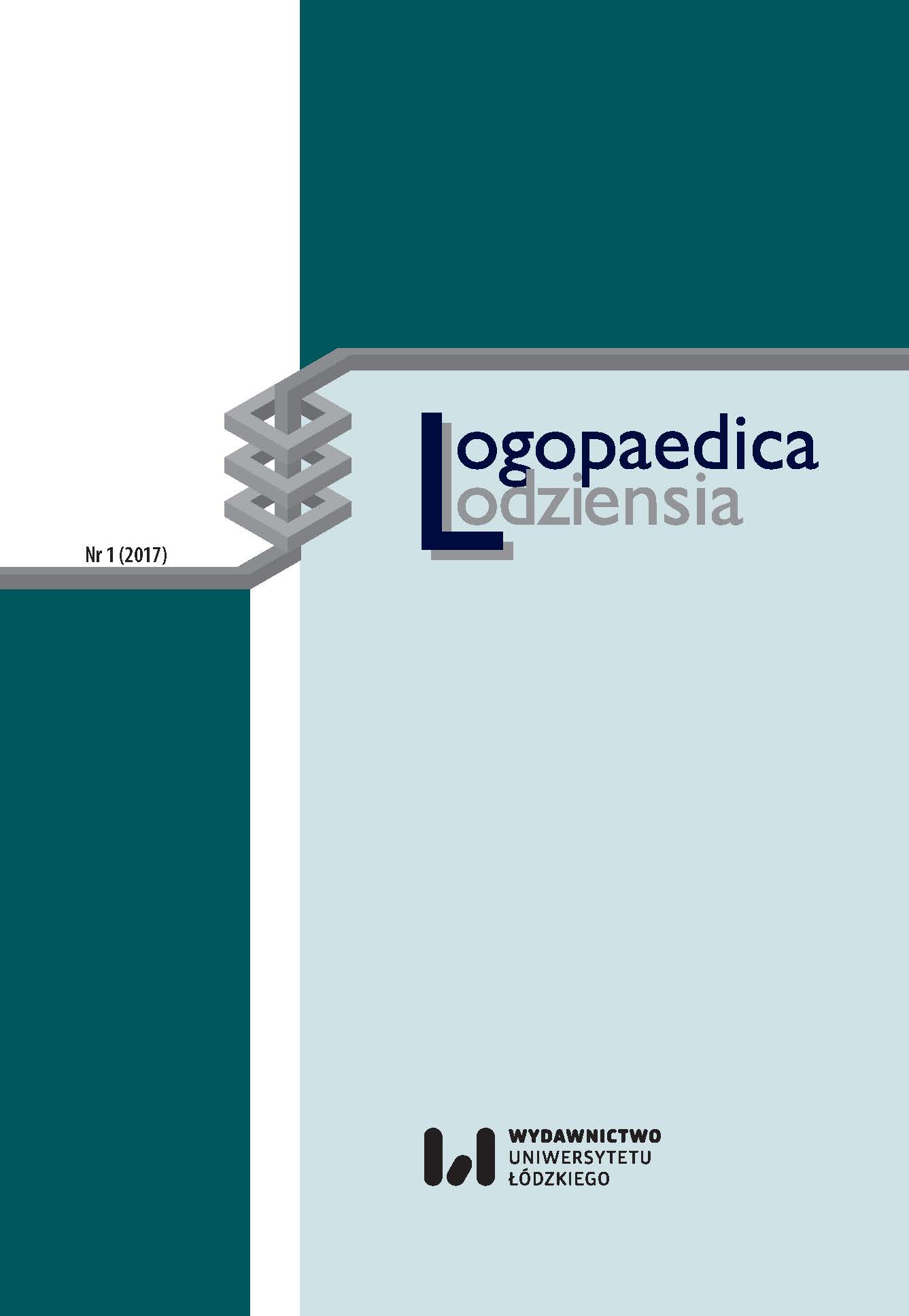Problematyka zaburzeń mowy i języka pochodzenia korowego u dzieci – analiza przypadku dziecka czteroletniego
Problems of speech and language disorders in children – case study of a four‑year‑old child
Author(s): Patrycja PokorskaSubject(s): Language and Literature Studies, Library and Information Science, Education and training
Published by: Wydawnictwo Uniwersytetu Łódzkiego
Keywords: speech and language disorders; dysphasia; childhood aphasia; zaburzenia mowy i języka; alalia; dysfazja; afazja dziecięca
Summary/Abstract: The problems of speech and language disorders on children with central nervous system disorders are dealt with in the literature of the subject from the perspective of various disciplines – medicine, linguistics, pedagogy, psychology and speech therapy. However, there are no clear definitions in the literature of semantic terms, the clinical picture, the substance of the disorder and their etiopathogenesis. Diagnosis of raised disorders in neurologically impaired children is a structured and multi‑specialist procedure using neurological, linguistic and psychological data, further impeded by ambiguity in the criteria for their description. In practice, a variety of approaches to naming and defining these disorders often stumbles on the discrepancies in the diagnosis, which leads to errors in communication between specialists. This article discusses the case of a four‑year‑old child with intrauterine hypothyroidism and second‑degree intraventricular haemorrhage with speech and language disorders, the example of which is terminological discrepancies.Problematyka zaburzeń mowy i języka u dzieci z uszkodzeniami centralnego układu nerwowego rozpatrywana jest w literaturze przedmiotu z perspektywy różnych dyscyplin naukowych – medycyny, językoznawstwa, pedagogiki, psychologii i logopedii. Jednakże w piśmiennictwie brak jest jednoznacznych rozstrzygnięć co do zakresów znaczeniowych terminów, obrazu klinicznego, istoty zaburzeń oraz ich etiopatogenezy. Diagnozowanie omawianych zaburzeń u dzieci obciążonych neurologicznie jest ustrukturyzowaną i wielospecjalistyczną procedurą wykorzystującą dane neurologiczne, lingwistyczne oraz psychologiczne, dodatkowo utrudnioną niejednoznacznością w kryteriach ich opisu. Wobec różnorodnych ujęć w nazewnictwie i definiowaniu omawianych zaburzeń w praktyce logopedycznej często natrafia się na rozbieżności w zakresie diagnozy, co prowadzi do błędów w komunikacji między specjalistami. W artykule omówiono przypadek dziecka czteroletniego z hipotrofią wewnątrzmaciczną i krwawieniem dokomorowym II stopnia, z występującymi zaburzeniami mowy i języka. Na jego przykładzie wskazano rozbieżności terminologiczne.
Journal: Logopaedica Lodziensia
- Issue Year: 2017
- Issue No: 1
- Page Range: 101-114
- Page Count: 14
- Language: Polish

